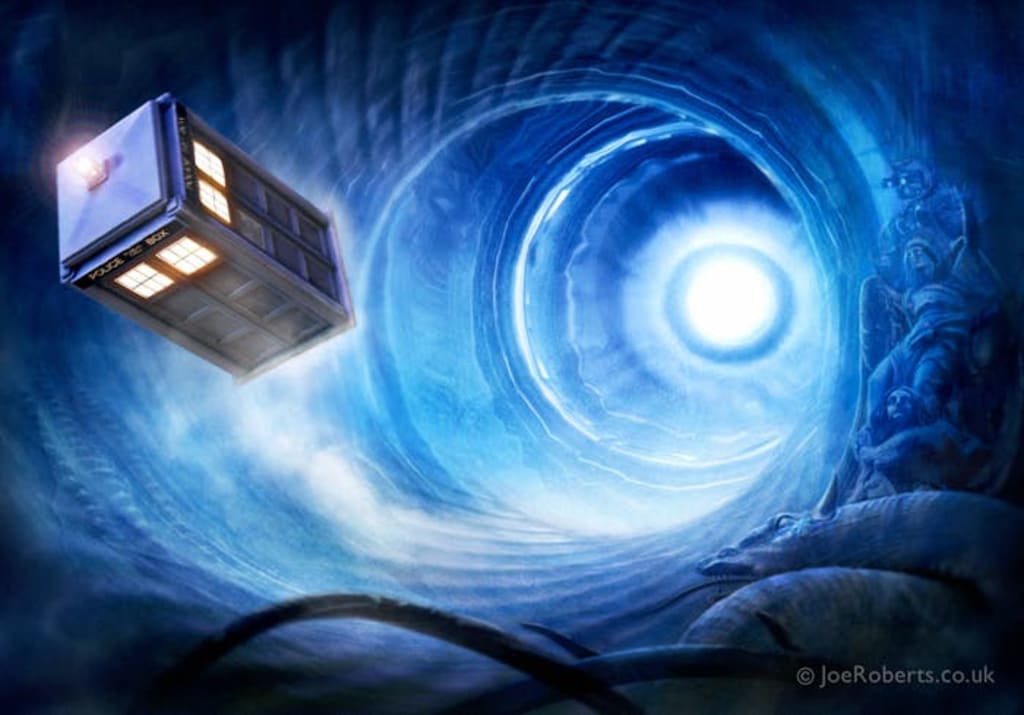
1 By travelling faster than light

This is the easiest and most practical way to get to the far future – go really fast.
According to Einstein’s theory of special relativity, when you travel at speeds approaching the speed of light, time slows down for you relative to the outside world.
The highest speeds achieved through any human technology are probably the protons whizzing around the Large Hadron Collider at 99.9999991% of the speed of light. Using special relativity we can calculate one second for the proton is equivalent to 27,777,778 seconds, or about 11 months, for us.
Amazingly, particle physicists have to take this time dilation into account when they are dealing with particles that decay. In the lab, muon particles typically decay in 2.2 microseconds. But fast moving muons, such as those created when cosmic rays strike the upper atmosphere, take 10 times longer to disintegrate.
Physicists have verified a key prediction of Albert Einstein's special theory of relativity with unprecedented accuracy. Experiments at a particle accelerator in Germany confirm that time moves slower for a moving clock than for a stationary one
2 Wormholes
Wormholes may not only connect two separate regions within the universe, they could also connect two different universes. Similarly, some scientists have conjectured that if one mouth of a wormhole is moved in a specific manner, it could allow for time trave

Wormholes connect two points in spacetime, which means that they would in principle allow travel in time, as well as in space. In 1988, Morris, Thorne and Yurtsever worked out how to convert a wormhole traversing space into one traversing time by accelerating one of its two mouths.
3. Event horizon of blackhole

Imagine a piece of paper held horizontally in the air — with both ends of the paper held in your hands. Let this paper represent “space-time”.
Now place a marble in the centre of this paper. The paper will sag in the middle — creating a depression. This marble (which in this scenario represents a black hole) is obviously a heck of a lot heavier than the paper (space-time) on which it sits, and therefore warps the paper around it.
In a similar way, if you were to get into a spaceship and hang around near enough to a black hole — space-time will be warped around you such that time will pass relatively more slowly for you than those further away from the blackhole’s influence. Staying in this space ship for what might seem like a few hours might see decades or even centuries pass for people back home on Earth. This is effectively the plot of the Hollywood blockbuster Interstellar.
It would be a tricky thing though — you need to be close enough to the black hole to “benefit” from the effects of time dilation, but either somehow be shielded or far enough away to avoid being stretched out and torn apart (known as spaghettification)!
4. BY BECOMING SMALL AS A SIZE OF STRINGS IN NUCLEAS

Yess it is like if you walk on wooden rod between two building you could only move in straight direction that is in one dimension but if you were an ant you could move in any directions that is you can go in left or right that is in 3 dimensions
similarly , if you become as small as string in atom you have 11 dimensions to travel and you could do time travel too
In string theory, the multiverse is made of different dimensions but the highest is 11th dimension. Beyond 11 dimensions, the universe would become unstable and dimensions higher than 11 would collapse to an 11-dimensional universe
Thank you for reading this 😊
Follow us on instagram @__cosmoclub__
About the Creator
Cosmoclub
Science writer with a passion for exploring the natural world, from the tiniest microorganisms to the vast expanse of space. Fascinated by pets, nature, and the mysteries of the universe.






Comments
There are no comments for this story
Be the first to respond and start the conversation.